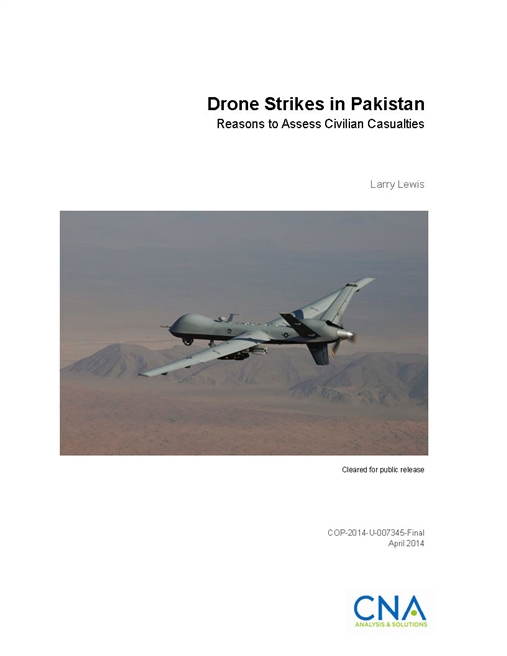The U.S. government has described its drone campaign in Pakistan and elsewhere as causing minimal civilian casualties. However, available data-open source data on Pakistan drone strikes, as well as data on air operations in Afghanistan, including drone operations-points to higher casualty numbers than suggested in official statements. Besides their importance to U.S. ethical principles regarding the conduct of war, civilian casualties from U.S. operations also affect national security, fueling threats to the U.S. while simultaneously limiting freedom of action and complicating relations with other nations.
One possible reason for this discrepancy between U.S. government statements and other reports is that civilian casualties from air strikes can be difficult to recognize when they occur. For example, recognition-and thus acknowledgement-of civilian casualties was a challenge in U.S. operations in Afghanistan, and is likely to be even more difficult for operations without a ground force in remote locations such as western Pakistan. This paper explains why official U.S. estimates for civilian casualties caused by drone strikes in Pakistan could reasonably be too low. Factors include an irregular enemy, the challenge of misidentifications, the tendency of air-based assessments to produce inaccurate assessments of resultant harm, and processes that assign civilian status to casualties more narrowly than in applicable international law.
Official statements also feature a common description of the drone platform as surgical with respect to civilian casualties. This suggests a misunderstanding of how civilian casualties occur. The characteristics of a weapon platform-in this case drones-are nottheonly factor in reducing civilian casualties; other factors like planning and training must be taken into consideration in claims of precision and discrimination. This point is illustrated in Afghanistan, where analysis showed that engagements by drones (2010- 2011) were ten times more likely to result in civilian casualties than engagements from manned platforms. In that case, failure to recognize and mitigate factors besides the platform in the targeting process resulted in an increased risk to civilians from the use of drones, despite some desirable characteristics of those systems.
CNA analyzed publically available data to determine the likelihood of civilian harm per strike in the drone campaign in Pakistan. From this data, we see that the U.S. has improved its ability to reduce civilian casualties during drone strikes in Pakistan over the past several years, as measured in the percentage of strikes causing civilian casualties and the number of civilian casualties occurring per incident. However, there remains room for improvement, as drone strikes conducted since 2011 still appear to cause civilian casualties about 8 percent of the time, though this number decreased sharply in 2013. An assess ment process could improve this rate, and such a process is briefly outlined at the end of this paper. (A forthcoming paper will provide both additional analysis and a model of an overall assessment process.)
Civilian casualties are one consideration in the debate concerning which department or agency of the U.S. government would be best suited for continuing the drone campaign. We observe that drone strikes in Pakistan were more likely to cause civilian casualties on average than drone strikes by military forces in Afghanistan. Although there are key differences in the two campaigns, this observation warrants further examination (also reserved for a subsequent paper).
Overall, it is both possible and worthwhile for the U.S. to conduct an independent assessment of civilian casualties resulting from drone strikes in Pakistan and elsewhere. This assessment could be provided to the legislative and executive branches to improve transparency and permit proper oversight of these operations. This would also help en sure that official U.S. statements reflect operational realities, helping to guard the credibility and reputation of the U.S. In addition, a process could be put into place to respond to drone-strike civilian casual ties with consequence management actions-including amends when they occur from such strikes. This practice could adapt success ful U.S. measures taken in Afghanistan, and would be consistent with recent legislation governing military operations.
Collectively, an assessment process for civilian harm, coupled with measures to address such harm when it is caused, would demonstrate the U.S. concern for civilians while also reducing grievances that can exacerbate threats to the U.S. in the longer term. These initiatives would help the U.S. demonstrate its stated commitment to the re sponsible use of force and to do all it can to minimize civilian harm in its operations.
Download reportCleared for public release, distribution unlimited.
Details
- Pages: 52
- Document Number: COP-2014-U-007345-Final
- Publication Date: 4/7/2014
